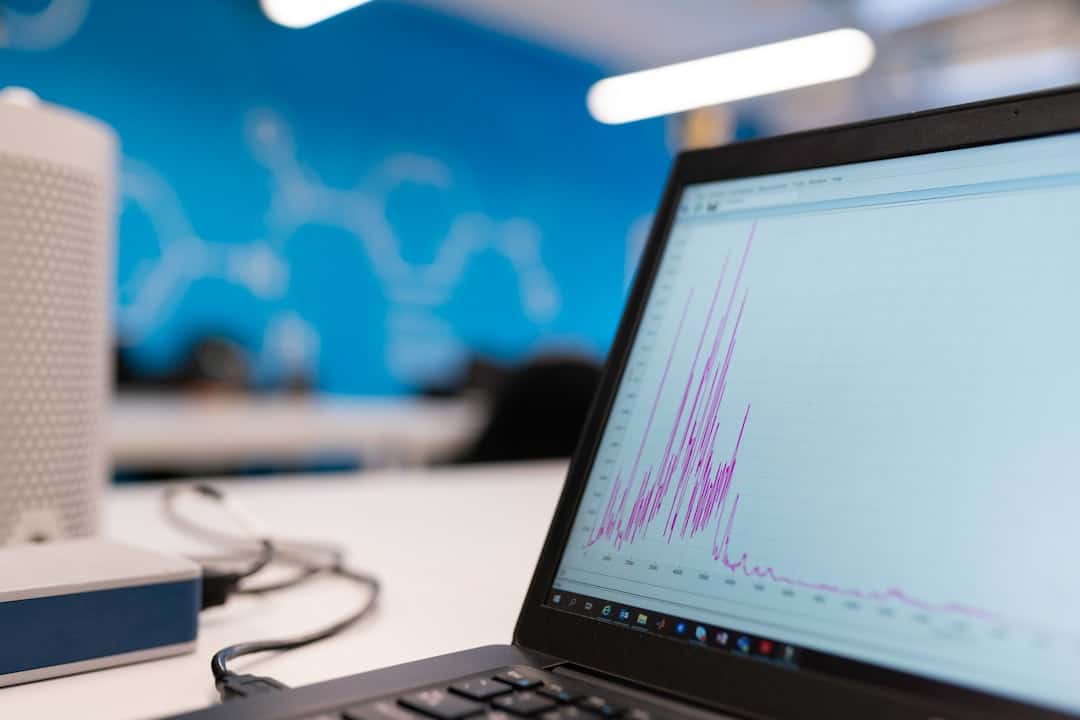Cyber vulnerabilities are weaknesses in digital systems that can be exploited by malicious actors to gain unauthorized access, steal data, or disrupt operations. These vulnerabilities can manifest in various forms, including software flaws, misconfigurations, weak authentication mechanisms, and human error. Recognizing and addressing these vulnerabilities is essential for organizations to protect their digital assets and sensitive information effectively.
Common cyber vulnerabilities include outdated software, which may contain known security flaws that attackers can exploit. Weak passwords also pose a significant risk, as they are often the primary defense against unauthorized access. Human error contributes to vulnerabilities through actions such as clicking on malicious links or falling victim to social engineering tactics.
The proliferation of Internet of Things (IoT) devices has introduced new vulnerabilities to many organizations’ networks. These interconnected devices often lack robust security measures, making them potential entry points for cyber attacks. Understanding the risks associated with IoT devices is crucial for organizations that utilize them in their operations.
Identifying and addressing cyber vulnerabilities is a critical step in developing a comprehensive cybersecurity strategy. By proactively mitigating these weaknesses, organizations can significantly reduce their risk of falling victim to cyber attacks and better protect their sensitive data and operations.
Key Takeaways
- Cyber vulnerabilities can arise from various sources, including outdated software, weak passwords, and human error.
- Common cyber threats include phishing attacks, malware, ransomware, and social engineering tactics.
- Strong password policies should include requirements for length, complexity, and regular updates.
- Multi-factor authentication adds an extra layer of security by requiring additional verification beyond just a password.
- Keeping software and systems updated with the latest security patches is crucial for protecting against known vulnerabilities.
Identifying Common Cyber Threats
In today’s digital landscape, businesses face a wide range of cyber threats that can compromise their security and disrupt their operations. By identifying these common threats, organizations can better prepare and defend against potential attacks. One prevalent threat is malware, which includes viruses, ransomware, and spyware designed to infiltrate systems and steal sensitive information.
Malware can be introduced through malicious email attachments, infected websites, or compromised software. Understanding the different types of malware and how they operate is crucial for implementing effective security measures to prevent infections and minimize the impact of an attack. Another common cyber threat is phishing, which involves tricking individuals into revealing sensitive information such as login credentials or financial details.
Phishing attacks often come in the form of deceptive emails or fake websites that appear legitimate, making it challenging for individuals to discern the authenticity of the communication. By educating employees about the signs of phishing and implementing email filtering solutions, organizations can reduce the risk of falling victim to these types of attacks. Additionally, ransomware attacks have become increasingly prevalent, where cybercriminals encrypt a victim’s data and demand a ransom for its release.
Identifying the signs of a potential ransomware attack and implementing robust backup and recovery solutions are essential for mitigating the impact of such threats. Furthermore, insider threats pose a significant risk to organizations, as employees or contractors with access to sensitive information may intentionally or unintentionally compromise security. By monitoring user activities and implementing access controls, businesses can detect and prevent insider threats from causing harm.
Overall, identifying common cyber threats is essential for organizations to develop proactive security measures and response plans to mitigate the risks and protect their digital assets.
Implementing Strong Password Policies

Implementing strong password policies is a fundamental aspect of cybersecurity that can significantly enhance an organization’s defense against unauthorized access and data breaches. Strong passwords are essential for protecting sensitive information and preventing unauthorized individuals from gaining access to systems and accounts. By establishing and enforcing robust password policies, businesses can reduce the risk of password-related security incidents and strengthen their overall cybersecurity posture.
One key element of strong password policies is requiring employees to create complex passwords that are difficult for attackers to guess or crack. This includes using a combination of uppercase and lowercase letters, numbers, and special characters to increase the complexity of the password. Additionally, organizations should enforce regular password changes to prevent unauthorized access in case a password is compromised.
By requiring employees to update their passwords at regular intervals, businesses can reduce the likelihood of unauthorized access due to stolen or leaked credentials. Furthermore, implementing multi-factor authentication (MFA) as part of the password policy adds an extra layer of security by requiring users to provide additional verification beyond just a password. This could include a one-time code sent to a mobile device or biometric authentication such as fingerprint or facial recognition.
By incorporating MFA into the password policy, organizations can significantly reduce the risk of unauthorized access even if a password is compromised. Overall, implementing strong password policies is essential for organizations to protect their digital assets and sensitive information from unauthorized access. By establishing complex password requirements and incorporating multi-factor authentication, businesses can enhance their cybersecurity defenses and reduce the risk of falling victim to password-related security incidents.
Utilizing Multi-Factor Authentication
| Metrics | Value |
|---|---|
| Number of users utilizing MFA | 500 |
| Percentage of successful MFA logins | 95% |
| Number of MFA-related security incidents | 2 |
Multi-factor authentication (MFA) is a critical security measure that adds an extra layer of protection beyond just passwords to verify the identity of users accessing systems or accounts. By requiring multiple forms of verification, such as a password combined with a one-time code sent to a mobile device or biometric authentication, MFA significantly reduces the risk of unauthorized access and strengthens overall cybersecurity defenses. One key benefit of MFA is its ability to mitigate the risk of stolen or compromised passwords.
Even if an attacker manages to obtain a user’s password through phishing or other means, they would still need to provide additional verification to gain access to the account or system. This added layer of security makes it significantly more challenging for unauthorized individuals to breach systems or steal sensitive information. Additionally, MFA provides an extra level of assurance for businesses that need to protect sensitive data or comply with industry regulations.
By requiring multiple forms of verification, organizations can demonstrate a higher level of security and reduce the risk of unauthorized access that could lead to data breaches or compliance violations. Furthermore, MFA is particularly important for remote access and cloud-based services, where traditional perimeter defenses may be less effective. By implementing MFA for remote access solutions and cloud applications, businesses can ensure that only authorized individuals can access critical systems and data from outside the corporate network.
Overall, utilizing multi-factor authentication is essential for organizations looking to enhance their cybersecurity defenses and protect sensitive information from unauthorized access. By requiring multiple forms of verification beyond just passwords, businesses can significantly reduce the risk of security incidents and strengthen their overall security posture.
Keeping Software and Systems Updated
Keeping software and systems updated is crucial for maintaining strong cybersecurity defenses and protecting against potential vulnerabilities that could be exploited by cyber attackers. Software updates often include patches for security vulnerabilities and bug fixes that address potential weaknesses in the system. By regularly updating software and systems, organizations can reduce the risk of falling victim to cyber attacks and ensure that their digital assets are adequately protected.
One key reason for keeping software updated is to address known security vulnerabilities that could be exploited by cybercriminals. As new vulnerabilities are discovered, software vendors release patches and updates to fix these issues and prevent potential exploitation. Failing to install these updates in a timely manner leaves systems vulnerable to attacks that could compromise sensitive information or disrupt operations.
Additionally, software updates often include performance improvements and new features that enhance the overall functionality and usability of the system. By staying current with software updates, organizations can benefit from improved performance and capabilities while maintaining a secure environment for their digital assets. Furthermore, keeping systems updated is essential for compliance with industry regulations and standards that require organizations to maintain secure environments and protect sensitive information.
By ensuring that software and systems are regularly updated, businesses can demonstrate their commitment to maintaining strong cybersecurity defenses and meeting regulatory requirements. Overall, keeping software and systems updated is essential for organizations looking to maintain strong cybersecurity defenses and protect against potential vulnerabilities that could be exploited by cyber attackers. By staying current with software updates, businesses can reduce the risk of falling victim to cyber attacks and ensure that their digital assets are adequately protected.
Educating Employees on Cybersecurity Best Practices

Educating employees on cybersecurity best practices is essential for building a strong security culture within an organization and reducing the risk of falling victim to cyber attacks. Employees are often the first line of defense against potential threats such as phishing attacks, malware infections, and social engineering tactics. By providing comprehensive cybersecurity training and awareness programs, businesses can empower their employees to recognize potential threats and take proactive measures to protect sensitive information.
One key aspect of employee education is raising awareness about common cyber threats and how they may manifest in the workplace. By educating employees about the signs of phishing emails, suspicious links, and social engineering tactics, organizations can reduce the likelihood of falling victim to these types of attacks. Additionally, providing guidance on how to respond to potential threats and report suspicious activities can further strengthen an organization’s overall security posture.
Furthermore, educating employees on the importance of strong password practices and multi-factor authentication helps reinforce good security habits within the workforce. By emphasizing the significance of creating complex passwords, regularly updating them, and using additional verification methods such as MFA, businesses can reduce the risk of unauthorized access due to weak credentials. Additionally, providing ongoing cybersecurity training and awareness programs ensures that employees stay informed about evolving threats and best practices for maintaining a secure work environment.
By keeping employees up-to-date with the latest cybersecurity trends and tactics used by cybercriminals, organizations can empower their workforce to remain vigilant and proactive in protecting sensitive information. Overall, educating employees on cybersecurity best practices is essential for building a strong security culture within an organization and reducing the risk of falling victim to cyber attacks. By providing comprehensive training programs and raising awareness about common threats, businesses can empower their workforce to recognize potential risks and take proactive measures to protect sensitive information.
Developing a Response Plan for Cyber Attacks
Developing a response plan for cyber attacks is essential for organizations looking to effectively mitigate the impact of security incidents and minimize potential damage to their digital assets. A well-defined response plan outlines clear procedures for detecting, responding to, and recovering from cyber attacks in a timely manner. By establishing a comprehensive response plan, businesses can minimize downtime, reduce financial losses, and maintain customer trust in the event of a security incident.
One key element of a response plan is establishing clear roles and responsibilities for responding to cyber attacks within an organization. By designating specific individuals or teams responsible for detecting potential threats, initiating incident response procedures, communicating with stakeholders, and coordinating recovery efforts, businesses can ensure a coordinated and effective response in the event of a security incident. Additionally, developing communication protocols for internal and external stakeholders is crucial for maintaining transparency and managing the impact of a security incident.
By establishing clear lines of communication with employees, customers, partners, regulators, and law enforcement agencies, organizations can effectively manage the fallout from a cyber attack while maintaining trust and confidence in their ability to address the situation. Furthermore, conducting regular tabletop exercises and simulations helps test the effectiveness of the response plan and identify areas for improvement. By simulating various cyber attack scenarios and evaluating the organization’s response capabilities, businesses can identify gaps in their incident response procedures and make necessary adjustments to strengthen their overall readiness.
Overall, developing a response plan for cyber attacks is essential for organizations looking to effectively mitigate the impact of security incidents and maintain business continuity in the face of potential threats. By establishing clear procedures, roles, responsibilities, communication protocols, and conducting regular exercises, businesses can ensure a coordinated and effective response in the event of a security incident.
If you are interested in learning more about the vulnerabilities of metaverse platforms and ecosystems, you may want to check out this article on the significance and impact of the metaverse here. It delves into the potential risks and challenges that come with the development and expansion of virtual economies and digital assets within the metaverse. Understanding these vulnerabilities is crucial for ensuring the safety and security of users within this emerging digital space.
FAQs
What are vulnerabilities?
Vulnerabilities are weaknesses or flaws in a system, software, or hardware that can be exploited by attackers to compromise the security of the system.
What are the common types of vulnerabilities?
Common types of vulnerabilities include software vulnerabilities, such as buffer overflows and SQL injection, as well as hardware vulnerabilities, such as Spectre and Meltdown.
How are vulnerabilities discovered?
Vulnerabilities are often discovered through security testing, code reviews, and by security researchers who actively search for weaknesses in systems and software.
How can vulnerabilities be mitigated?
Vulnerabilities can be mitigated through regular security updates and patches, implementing secure coding practices, and using security tools such as firewalls and intrusion detection systems.
Why are vulnerabilities a concern?
Vulnerabilities are a concern because they can be exploited by attackers to gain unauthorized access to systems, steal sensitive information, disrupt services, and cause financial and reputational damage to organizations.











Leave a Reply